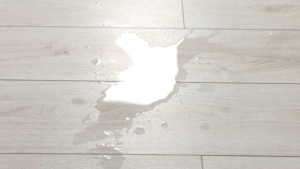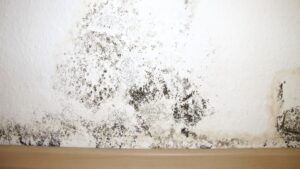Water damage is a recipe for disaster. Water can cause serious, even irreparable damage to your ceilings, floors, walls, and belongings. Ponding water can become a breeding ground for harmful bacteria and viruses. Long-term water damage may lead to compromised structures and mold or mildew growth.
If water damage has already occurred, have a professional carry out water damage restoration in Marin County. A water damage restoration expert will remove water, dry out affected areas and repair damaged structures. Restoration experts have the skills to get to the root cause of water damage and address it.
How to Stop and Repair Water Damage
If you notice signs of water damage, move swiftly to address the problem or things may take a turn for the worse and your structures may require more expensive repair.
Follow these tips to stop and repair water damage in your home.
Identify the Source
First and foremost, identify the cause of water damage. Start by inspecting areas where you see visible signs of water damage, including water stains on ceilings, walls, floors, or mold growth. Water travels downwards, so always check above the area where you first notice the damage. For example, if you see a stain on the ceiling, the source could be a leaky roof or upstairs plumbing.
Check all plumbing lines, fittings, and fixtures in your home, especially under sinks, around toilets, and near water heaters. Look for signs of leaks, such as puddles, dampness, or corrosion. Roof damage, resulting from missing shingles, cracked flashing, or damaged chimney caps can allow water to enter your home. Inspect your attic during or after rain for signs of leaks.
Check your exterior walls for cracks or gaps and watch out for signs of water intrusion, such as peeling paint or swollen frames. Leaks from air conditioning units or condensation from ducts can cause water damage. Have a professional inspect your HVAC system for leaks or condensation issues. Address any HVAC issues promptly.
If you’re unable to identify the cause of water damage or if it’s extensive, consider hiring a professional. Professionals have the experience and tools necessary to identify and address the root cause of water damage and repair water-damaged structures.
Remove Water and Dry the Area
Use pumps, vacuums, or mops to remove standing water. The sooner you remove ponding water, the less damage it will cause. After removing standing water, dry out the area thoroughly using fans and dehumidifiers. If weather permits, open windows to ensure cross-ventilation, which can help prevent mold growth. In case the damage is extensive, have a professional perform water damage restoration in Marin County. Water damage restoration experts use heavy duty industrial grade fans and humidifiers to thoroughly dry wet areas.
Remove Damaged Materials
Some materials, such as carpeting, insulation, and drywall, may need to be removed and replaced if they’re too damaged or mold may grow on them. When you first notice that your carpet or wooden structures are water-damaged and can be salvaged, dry them thoroughly before serious damage occurs.
Once you have removed damaged items from the affected area, check under floorboards and the padding beneath your carpet to see if water has made its way into these areas. If so, dry them using fans.
Clean and Disinfect
Once the area is dry and damaged materials are removed, clean all affected surfaces with appropriate cleaners to kill any bacteria and mold spores. Remember to disinfect any affected items in order to eliminate viruses and bacteria on their surfaces.
Inspect for Mold
Once everything is dry, look for signs of mold growth such as strange, musty odors and slimy, discolored or fuzzy patches on your walls. Mold can spread quickly to the parts of your home that are unaffected by water damage, which is why you need to act swiftly.
Do not try to remove mold on your own, as you are highly likely to make mistakes that can lead to cross-contamination. Also, you may accidentally breathe in mold spores. Instead of taking the DIY route, leave the job to a professional specializing in water damage restoration in Marin County.
Preventing Future Water Damage
Proactiveness pays off. Why wait for water damage to occur to your home and then repair it when you can prevent it in the first place?
Here are some tips to help you protect your property from water damage.
Make Maintenance A Priority
Check your roof regularly for damaged, loose, or missing shingles that may allow water to infiltrate. To make sure water can flow freely away from your home’s foundation, clean your gutters and downspouts regularly. Inspect hoses and connections on appliances including washing machines, dishwashers, and refrigerators. Replace hoses every 5-7 years or sooner if they show signs of wear.
Seal Your Windows and Doors and Waterproof Your Basement
Ensure that all your windows and doors are properly sealed to prevent water from making its way into your home during heavy rains. Use waterproofing compounds including sealants and coatings on basement walls and floors to prevent groundwater from entering your basement. Inspect your home’s foundation regularly and seal any cracks or openings with appropriate sealant.
Ensure Proper Drainage
Ensure proper grading around your home. The ground around your home should slope away from the foundation, directing water away. To prevent basement flooding, promptly remove standing water in your basement using a sump pump. Trying to cope with drainage problems? Build a French drain to drain water away from your property.
Monitoring and Detection
Install water leak detectors in your bathroom and basement. Strategically placed water sensors can alert you to leaks and potential flooding, allowing you to take preventive steps swiftly in order to prevent significant damage. If you notice an unexpected spike in your water bill, investigate the cause.
West Coast Fire & Water specializes in water damage restoration in Marin County. We use tried and tested methods and advanced tools to identify and address hidden water damage. To learn more, call 415-499-9000.

Marketing Director, West Coast Fire & Water
Christian Ahlmann is the Marketing Director at West Coast Fire & Water, a California restoration company providing water, fire, mold, biohazard, storm, and reconstruction services across multiple locations. He leads brand, content, and demand programs that support rapid response and customer education. His background blends operational storytelling, community engagement, and crisis communications.



